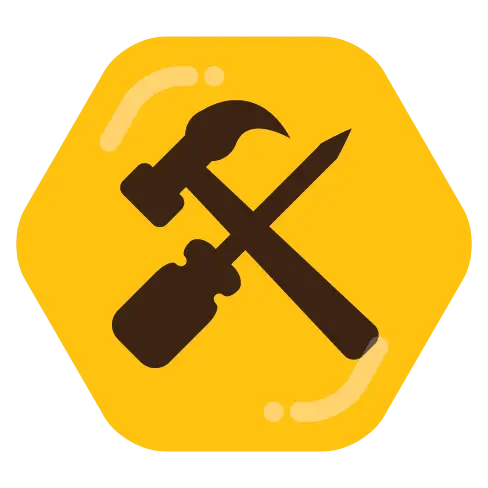If you need advice that particular kind of DIY, feel free to post here and tag me or DM me directly. Hopefully I can be very helpful to some of you folks who either can’t afford to pay expensive mechanics or want to learn on your own.
I work as an independent mobile mechanic in middle Tennessee (for now). My primary work is motorcycles and small engines, but I’ve done plenty of work on cars too. I used to post quite often on r/fixxit back before I left Reddit.
Pic is an example of my work. That’s one of my motorcycles, which I resurrected from the dead. I took that picture while was riding to the small town of Cave-In-Rock, Illinois, to rebuild 4 carburetors for a customer, and in line waiting on a ferry to cross the Ohio river.
Hey, I don’t need anything fixed, I just wanted to say that you seem like a great person. Stay awesome!
Really nice of you to offer this to the community!
I really miss the sheer simplicity of the bikes that I used to ride. Specifically, the KLR650 and the carbureted KLX250. Every but of maintenance was easy to DIY. Even a clutch rebuild was just simple. The 250 had the extra bonus of not wanting to cry, when it decided to take a nap.
Those older simple machines are wonderful. The green BMW was my first fuel-injected bike and after the parts bills to fix its dead fuel system, I still prefer carburetors. EFI is convenient but when it breaks it takes specialty tools and knowledge and lots of money to fix. First part I ever bought for that bike, used, was close to $300 on eBay. It was the plate that the fuel pump, fuel filter, and fuel light float mount to, and it has a fuel-tight wiring connection going through it. The ground wire powering both the pump and float switch had broken contact somewhere in there. No way to fix it and make it fuel-safe again. Then there was buying and installing a new fuel filter and pump, replacing in-tank and external fuel lines, installing pressure-safe disconnect fittings, cleaning the fuel injectors… It eventually became worth it. That bike and its big brother are the most comfortable and practical motorcycles I’ve ever owned. Just took a lot to get there.
I’m about to resurrect a 1986 Yamaha XT350 for my partner and that’ll be a much easier and less expensive process than my fancy BMW’s.
Unfortunately as I am on mobile I cannot dm… but this may be an interesting discussion:
Is it any kind of possible to buy a kind of kit to essentially hybridize an existing bike into, if not a fully hybrid vehicle, at least something that would charge a battery system as you drive?
I realize the most likely answer to this is basically you would have to re-engineer the bike considerably, even if youre not trying to work an electric motor and hybrid drive system into the thing, there are likely a slew of problems.
That being said… maybe someone has attempted this?
Seems like hybrid motorcycles are just barely a thing that exists for purchase… but I have not been able to find any where on the internet detailing trying to hybridize an existing bike.
As someone who rides an already heavy bike (it’s just old), and drives a hybrid, I just don’t personally see motorcycles ever really being a meaningful use-case for hybrid tech. Batteries are heavy and current electric bikes already don’t get fantastic range, so it just doesn’t make sense to add more weight to get less range. Stop-start application may have some use in a dual clutch transmission, or maybe on pulling the clutch in, but that’s only useful in traffic, where you really want consistency and reliability when you don’t have any buffer space, and most bikes get better fuel economy anyways…
Didn’t mean to rant a bit, I was a hybrid and EV diag tech for Chevy for a bit and I gave it some thought.
1984 Honda VF700S and a 1st, then 2nd gen Toyota Highlander hybrid.
Oh no need to apologize for ranting, this is exactly the kind of feedback I was looking for, thank you!
Motorcycles and battery tech really don’t go together well because batteries are inescapably heavy when scaled up to the power and range demands of a proper motorcycle. Most street bikes have at least 120 miles of range and that’s more than the first mass-market electric cars had. Hybrid would be even worse than pure electric for weight. Hence why almost nobody’s making them.
If you paid someone enough to make it, of course you could buy one. But you’d spend mansion money. A two-wheeled hybrid would have to be engineered from scratch. I can’t think of a single motorcycle made and sold in the last couple decades that hasn’t been designed specifically around its internal combustion engine. They’re not meant for easy powertrain swaps and nowadays they’re built tightly together. Balance is also incredibly important on a motorcycle and even just a few pounds in the right places can massively change how it rides.
Small motorcycles are already stupid efficient, too, so that’s another reason why a hybrid isn’t a common idea. The fuel-injected Honda Grom can achieve over 100MPG on regular gas and fuel-injected scooters can get even more. What would be gained in fuel efficiency would be lost to the weight of the whole hybrid setup.
Anyone can attempt a home project with enough time, money, and ingenuity though.
I could perhaps see something like a Ural sidecar rig having a hybrid drivetrain thrown into it since weight and balance isn’t much of a concern. You could easily throw 200 pounds of batteries into the sidecar without causing any problems, and put a motor next to them to drive the axle from next to the outrigger wheel. Ural makes 2WD models so on those there’s already a driveshaft out there. But that’s a 3-wheeled contraption that already weighs plenty.
Damn, thanks for the write up!
Wish I could add something useful to it, haha.
It’s a neat idea, but you know what the most practical “hybrid” on two wheels already is? A hybrid between human pedal power and an electric motor: the E-bike. Honestly if they weren’t so expensive they’d completely wreck the 50cc scooter market. Very similar use cases, lighter, about the same speeds, more nimble, easier to park, and better exercise. In a place with decent bicycle infrastructure they’re absolutely ideal.
I can’t tell you how thankful I am that you posted this. I’ve actually been sitting on a Husqvarna Svartpilen 401 for about a year now and need to give it a complete maintenance overhaul plus a new suspension so I can drop it a couple of inches for QOL. I’ve been wanting to use this as my project to get more familiar with wrenching as well, since I DIY a lot of tech stuff personally and professionally, and want to eventually get a project car for the track. Any guidance/help/pointing in the right direction is greatly appreciated.
Edit: Forgot to mention it’s a 2019.
I have only worked on 1 Husqvarna to date – a 2015 501FE.
Depends on how mechanically-experienced you are in general. If you’ve ever worked on a car or another motorcycle you’ll be in decent shape. If not, there’s a ton of small things to know, especially with a motorcycle so new and electronically fancy. Lots of procedures and even some tools are model-specific.
In general there are a few things I’d say: buy torque wrenches and learn how to use them or you will be breaking a lot of fasteners. Get a service manual for your motorcycle if one exists, and refer to it frequently; they often have a section for beginner mechanics that explains many things you need to know. They also contain accurate reference information you can read faster than I can reply.
Here’s the bad news: good suspension is not cheap and there’s no way around it. Especially custom or lowered suspension. Often it’s cheaper to have a seatbuilder lower or change your seat via a rebuild than it is to buy a custom shock. You have to change both ends of the bike to match if you lower one end. How tall are you? What’s your inseam relative to the seat height? I see a lot of beginners saying they want to lower their motorcycle because it makes them feel more comfortable at lower speed, because they can’t get their entire feet flat on the ground – frankly if you can get the front third of both feet down on the ground while sitting that is enough to balance. If you’re shorter with a shorter inseam than the test rider the machine was designed for, that’s understandable and custom suspension or seatwork may be in your future.
Thankfully, the person I got the bike from had the full owner’s and service manual. I know that newer versions of the bike have an adjustable suspension included, and am wondering if that will still fit on the older bike. Maybe an adapter plate or something like that? I could live without it, with more time I’ll get comfortable wheelin’ and dealin’. I don’t know what kind of changes were made besides the routing of the exhaust after they moved production from Sweden to India for the newer models.
I definitely need to build up my automotive tool kit. Everything I have now is more geared towards computer repair/light house work. The bike has been sitting for a year straight with a full tank of gas and fluids, so just wanted a checklist of what to attack how/in what order; that way I know how to get started on this thing. I know that the manual will provide steps and required tools. How to flush the tank/lines/injectors safely would be nice, I don’t know if the manual is going to have info like that. Checking if the wheel balance is still good/how to adjust. I have some aftermarket stuff to install which should help with known issues on the bike, like the fuel/air ratio being a little lean stock.
Happy to exchange some info if you want to be pen pals on a project, I appreciate any guidance/wisdom you’re willing to pass along. I’m moving into a new place that’ll give me a dedicated space where I can actually work on this thing and get it up to shape.
As to how feasible a suspension adapter plate is: that kind of stuff, and whether certain parts will swap between years, is super model-specific. Unfortunately I can’t help you there and my suggestion would be to find Husqvarna enthusiast forums and/or browse through the OEM parts diagrams. My limited experience with non-OEM motorcycle suspension and modifications has told me this: suspension is wildly, massively complicated to design and engineer. You can spend a whole career on it. I looked into revalving a Fox shock for my BMW and ran smack into either buying an $80 software license to run all the figures for me (a complex specific Excel spreadsheet really) or reading textbook-sized papers full of extensive math. So be careful and don’t tread new territory unless you absolutely have to, because suspension is very easy to mess up and often hard to get right.
As to sitting for a year: the environment it sat in matters. Was it outside, inside, moist, dry? That will determine how much stuff you need to check over and possibly replace, but no matter what your primary concerns will be two things.
-
The shelf life of gasoline is 6-8 weeks unstabilized and E10 (standard ethanol-mixed pump gasoline) sucks water straight out of the air. Sometimes you can get away with longer in a fuel injection system that’s well-sealed, but never a full year unless the gas got treated with something like Sta-Bil before it sat. You will either need to remove, or dilute, that old gasoline. If the tank was full I’d recommend pulling that gas out and putting it into something else, like a big car or truck fuel tank, where its few gallons can be diluted with a lot more fresh gasoline and it won’t hurt. If there’s less than a gallon in it you may simply be able to fill it back up to the brim with fresh gas and some octane booster. If your Husky is anything like that one I worked on, the tank won’t be a nightmare to remove and that’ll make the fuel a lot easier to just turn the tank over and dump it out into a funnel. Your service manual should cover the tank removal procedure in detail. I wouldn’t worry about the tidbit of fuel in the lines, but if you’re unlucky your injector may be clogged. Try the fresh gas first though. If it won’t run with fresh gas then I or a decent Youtube tutorial can walk you through cleaning out a fuel injector (which I actually did on the Husky I worked on, which had sat for 2 years with the same gas in its tank).
-
Your tires, if the bike has been sitting on them the whole year without being inflated or moved, may have flat spots. You can really only determine this via the eye test, and the ride test if it’s not visible. This isn’t really a “balance” issue so much as it is the carcass of the tire getting stuck in a bent state. If you can see that one part of the radius of the tire doesn’t look perfectly round like the rest, that’s a flat spot. Unfortunately the only cure for an obvious flat spot is to replace the tire. If you can’t see obvious flat spots, you’ll only know when you reinflate the tires and ride. It’ll feel like an imbalanced wheel, like you’re constantly hitting small bumps in a rhythm that increases the faster you go. Again, only cure is new tires.
Those are the biggest issues.
Any advice on the battery? Should I just replace it with something like a lithium ion battery outright, or can I just stick it on a tender and see if it’s still good?
Ah, shoot, forgot about that.
If it’s a traditional lead-acid battery and is also the original factory one, just replace it. Lithium batteries are great as they save a bunch of weight, but they’re expensive and don’t handle the cold as well.
I can’t tell you how much I appreciate the guidance and thoughtful responses. I’m not in a position to start getting it going immediately, but will reach out (if you’d like) once I start on her. Thank you again for your time and knowledge-base.
-
Is there any more specific stuff you’d like to know?



